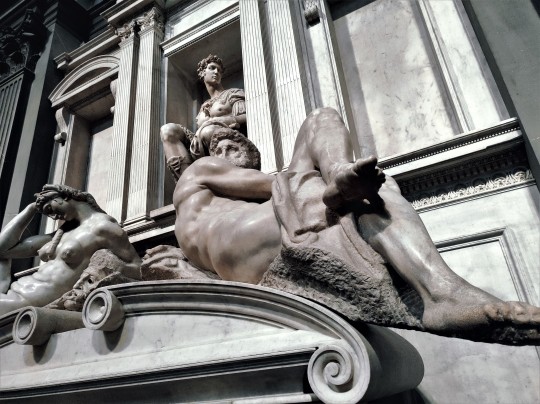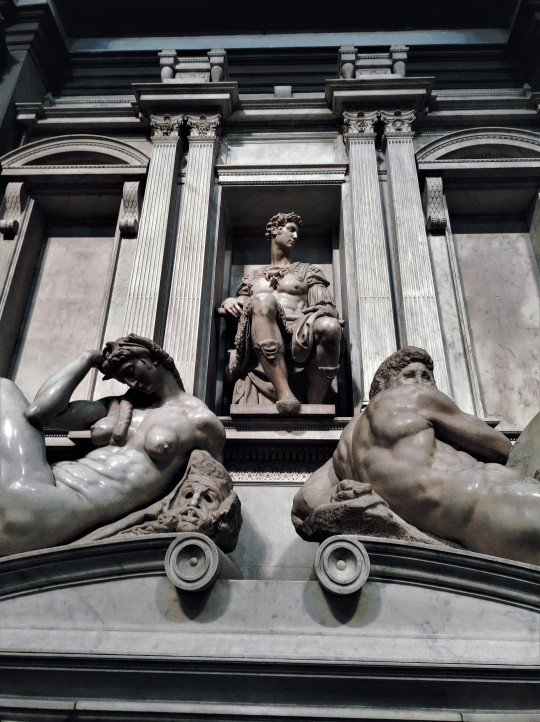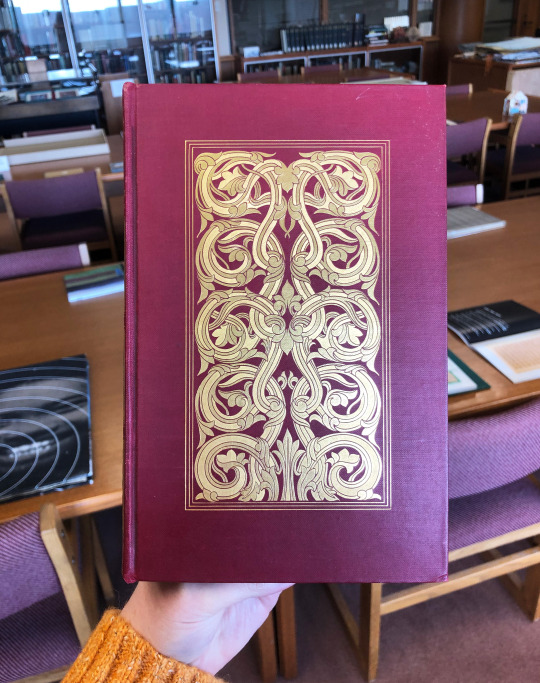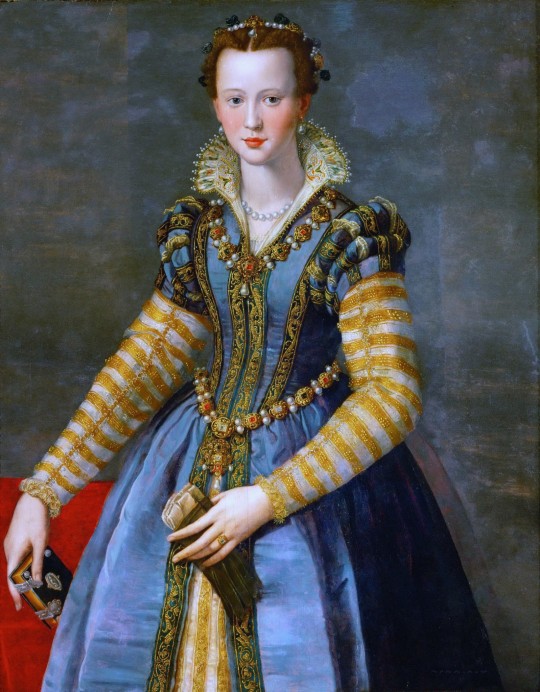#Lorenzo de'Medici
Text
Медичи
— Я удивляюсь! В этом мальчике есть частичка Джулиано!
— Чего ты хочешь?
— Я не могу больше писать усопших в Лоджии.
Прости, Лоренцо. Джулиано был полон жизни.
Давай почтим его память, оставив смерть в прошлом.
— Нет, этому не бывать. Твоя работа важна.
— Потому что она наводит страх?!
Учит людей бояться тебя?
— Хватит. Закончи работу, которую я тебе дал.



#medici#medici the magnificient#sandro botticelli#Sebastian De Souza#Lorenzo de'Medici#Daniel Sharman#roleplay#search
11 notes
·
View notes
Text
To his wife Clarice at Florence Milan, 22 July 1469

I have arrived here safely and am well. I am sure this will please you more than any other news save that of my return, judging by my own feelings of longing for you and for home. Make much of Piero, Mona Contessina, and Mona Lucrezia. I shall hasten to finish here and return to you, for it seems to me a thousand years since I saw you. Pray to God for me, and if you want anything from here let me know, so long as I have not already left.
-From Milan, July 22, 1469
Source: Lorenzo de' Medici, Selected Poems and Prose
#de' medici#giuliano de medici#cosimo medici#italia#lorenzo medici#lorenzo de medici#clarice orsini#medici the magnificent#Lorenzo de'Medici :selected poems and prose#renaissance#florence italy#tuscany#milan
10 notes
·
View notes
Text
Ah, I'm sure I've said this before, but for a fantasy writer, writing bankers as big-nosed greedy nonhumans always seems like such a missed opportunity. I'm glad it mostly seems to be a product of the long 20th century.
One could just as easily take one's banking inspo from the larger-than-life Medici family with all its wild dramas (assassinations! four popes! slow underminings of the republic! Savonarola may or may not have refused Lorenzo de'Medici the last rites!) and intrigues.
The Medici family were very Catholic and the way of making money in charging interest on loans was a sin (usury), which delivers one the easy potential for a much more complex relationship with greed than "well... we like gold." This also complicated their relationship with all the religious art and buildings and stuff they commissioned. (It's okay to commit sins, if you can donate them away.)
Your bankers could be cutthroat "apolitical" "first citizens" with boatloads of money who give to the poor (while creating the poor) and produce enormous numbers of of iconic artworks to uplift the local religion and embrace public life as gentlefolk.
They could be clicking their tongues and shaking their heads and saying, "Oh, I can't help that! Aren't we all just private citizens under popular government?" while half the government is related to them and the other half owes them favours.
Even if one's story isn't about these guys, it would be great fun to have them swanning about in the background. Definitely if I'm ever writing my own old school fantasy story that's the inspiration I want to draw from.
33 notes
·
View notes
Text






Tomb of Giuliano de'Medici in San Lorenzo Chapel by Michelangelo Buonarroti // Florence, Italy
#michelangelo buonarroti#michelangelo#artwork#artistic#art history#art#baroque sculpture#sculpting#sculpture#san lorenzo#san lorenzo chapel#de medici family#florence#italy#tomb#day and night#art museum#museum photography#art academia aesthetic#art academia#classic academia#dark academia#academia#academics#light academia#classic academia aesthetic#classical academia#darkest academics#darkest academia#dark academia aesthetic
31 notes
·
View notes
Text

Ecce Homo
Lodovico Cardi, conocido como Cigoli (Cigoli, San Miniato 1559 - Roma 1613)
Fecha: 1607
Museo: Palacio Pitti
Recopilación: Galería Palatina
Colocación: Salón de Ulises
Técnica: Pintura al óleo sobre lienzo
Dimensiones: 175x135 cm
Inventario: Inv. 1912 n. 90
La pintura, quizás la más conocida de Ludovico Cigoli y considerada una de sus obras maestras, fue un encargo del noble romano Massimo Massimi. La biografía de Cigoli, escrita por su sobrino en 1628, transmite la noticia -un verdadero topos- del concurso promovido por Massimi que habría enfrentado a tres pintores, Caravaggio, Domenico Passignano y Cigoli, convocándolos a competir sobre un tema cristológico. Cigoli superó a sus oponentes con esta pintura, en la que la preciosidad de la materia pictórica, los damascos, rasos y terciopelos, los refinados efectos cromáticos venecianos, se mezclan con el intenso naturalismo de los rostros, retratados del natural. El ilusionismo perspectivo creado por el parapeto de mármol en primer plano imparte una fuerte teatralidad a la escena, resultado del intercambio continuo entre pintura y escenografía en la Florencia del siglo XVII. La fama del cuadro también está ligada a esta historia, a la gran resonancia que tuvo la obra en comparación con el realismo de Caravaggio, tanto en el contexto artístico romano como florentino. Ya antes de 1630 la obra estaba registrada en la colección florentina de Don Lorenzo de'Medici, y poco después (c. 1638) entró en la colección del Gran Duque de Toscana Fernando II de'Medici. Desde entonces, salvo un breve paréntesis español y la enajenación temporal tras las requisiciones napoleónicas (1799-1815), el lienzo ha permanecido siempre en el Palacio Pitti.
Texto por Anna Bisceglia
Información de la web de la Gallerie degli Uffizi, fotografía de mi autoría.
3 notes
·
View notes
Text
Kötü bir şey söylemek isteyen söylesin, biz yapacağız, siz de diyeceksiniz.
Lorenzo DE'MEDICI
1 note
·
View note
Text
by Prussian_Queen
Is it October? No. Do I care? No. Here is a collection of prompts for me to work on. Will any of it actually get completed? No idea. But it's an attempt. Tags and fandoms will be added as I go.
Day 1: Stabbed; Original character x Original character
Day 2: Bloody Hands: I Medici Lorenzo De'Medici/Francesco De'Pazzi
Day 3:Panic: Dark Rise Will Kempten/James St.Clair
Day 4:Drugged: I Medici Cosimo De' Medici/ Rinaldo Albizzi
Day 5:
Day 6:
Day 7:
Day 8:
Day 9:
Day 10:
Day 11:
Day 12:
Day 13:
Day 14:
Day 15:
Day 16:
Day 17:
Day 18:
Day 19:
Day 20:
Day 21:
Day 22:
Day 23:
Day 24:
Day 25:
Day 30:
Day 31:
Words: 1925, Chapters: 3/?, Language: English
Fandoms: Original Work, I Medici | Medici: Masters of Florence (TV), Dark Rise Series - C. S. Pacat
Rating: Explicit
Warnings: Graphic Depictions Of Violence, Major Character Death, Rape/Non-Con
Categories: Multi
Characters: Original Characters, Lorenzo "Il Magnifico" de' Medici, Francesco de' Pazzi, Will Kempen, James St. Clair, Anharion (Dark Rise Series), Sarcean (Dark Rise Series)
Relationships: Lorenzo "Il Magnifico" de' Medici/Francesco de' Pazzi, Original Character(s)/Original Character(s), Will Kempen/James St. Clair, Anharion/Sarcean (Dark Rise Series)
Additional Tags: Original Character(s), Whump, Tags May Change, Other Additional Tags to Be Added, I'm Sorry, Dubious Consent, Dubious Morality, Stalking, lots of pain, No One Is Okay, Minor Character Death, Kidnapping, Torture, Happy ending? I don't know her., No Beta we die like the conspirators, Panic Attacks, Processing reality, bad things happen, Misinformation
0 notes
Text
ALPHA-BET Is Medici Etherton Code, Code-X Leonardo da' Vinci. Alpha-bet/Bet: B-Bergerud, E-Etherton, T-time.
Alpha-bet 8 letters, Medici numbers 5,8,13.
'MEDICI ETHERTON CODE'
Leonardo da' Vinci gave us 7 Codes/Clues for Medici Etherton Code:
L, V, S, M, Co, de, X. (Co-de-X)
Leonardo da' Vinci invented the
Alpha-bet he gave each letter a Code and invented the English language.
Medici Etherton Code:
A-Princess Angela de' Medici is Mona Lisa (America,)
B-Bergerud (B-ible, B-oeing, B-itcoin, bet, book, bank, brick, bike, ) (k)
C-King Cosimo de' Medici, D-Prince Leonardo da' Vinci de' Medici (day, date) E-Etherton (Evergreen, ) F- Prince Franc de'Medici (farm, Fir, fish, food, ) G-Queen gena de' Medici Etherton (Geneva Bible,
Ge-or-ge, Ge-or-gia, green, Pu-ge-t Sound, ) H-horn, I-Italian, J-Juan Etherton (Jesus,) K-King Cosimo de' Medici, L-Prince Leonardo da' Vinci de' Medici
( Lake, LoVe) M-Medici (The M in 'The Last Supper', 'The Mayflower', Mu-seum, Medici-ne, M-ovie, Mu-sic,
Medi-na, Medi-a) N-Prince Lorenzo de' Medici (number, ) O-Opera (Prince Lorenzo de' Medici,) oran-ge,
P-Protect us (God,) q-Queen gena de' Medici Etherton ( IRAQ, Nasda-Q )
R-ruby ( IRAQ, Queen gena de' Medici Etherton, GEM S-ton-e, ) s-Superior (Jesus, Lake Superior,) t-TIME (God,) u-under, V-Prince Leonardo da' Vinci de' Medici, w-Washington, x-Prince Leonardo da' Vinci de' Medici (Code-X) y-Etherton (Yos-emit-e is time backwards) Z-Prince Lorenzo de' Medici (zoo, zero)
(de) M-ed-ici backwards and De' ember. de: (R-ed, L-ed Zeppelin, gar-de-n,
De-mocrat, de-mocracy, Unit-ed,
F-ede-ral,
In-de-pen-de-nce,
De-laware, De-nver, De-t-ro-it,
R-ed-mond, de-sert, R-ed-dit, vi-de-o,
Ed-it-or, Mic-ro-soft Ed-ge.)
Co-King Co-simo de' Medici: Co-untry, Co-unty, co-mputer,
Co-de, Co-de-X, co-mpass, Co-lumbia, Co-ffee, co-caine, cho-co-late, co-lor,
ee-Princess Etherton's (Coffee, green) ll-Bell
Pi-(God) Pi, Pie, Pi-nterest, Pi-ano, Pi-ke, Pi-zza, Pi-ne, Pi-pe, Pi-nk, Pi-llow,
H-ip-pi-e, Mississ-ip-pi.
El-Etherton
El-evation, El-ectric, El-ephant, oo-Orchestra (school, zoo, zoom).
Peacefully, Queen gena de' Medici Etherton I am also a Bergerud.
#god #jesus #america #europe #instagram #facebook #wallstreetjournal #cnn #reuters #npr #nytimes #msnbc #senate #lasvegas #smithsonian #foxnews #seattletimes #nbcnews #apnews #abcnews
#themet #presidentbiden #washingtonpost #potus
#peoplemagazine #seattle #fox13 #washingtondc #komo4
#cnbc
1 note
·
View note
Text
a couple weeks ago my ttrpg group's art commission got done and this weekend I paid a furry $30 for a drawing at anthro new england now I feel like lorenzo de'medici over here this is so much fun

1 note
·
View note
Photo






Publishers’ Binding Thursday
This week’s publishers’ binding is our 1906 copy of The Life of Benvenuto Cellini, Written by Himself, published by Brentano’s in New York. Benvenuto Cellini (1500-1571) was an Italian goldsmith, sculptor, author, and murderer. His life seems to have been very interesting, with multiple murders (including the murder of his brother’s killer and the murder of a rival) and other issues that got him in trouble with the law. Definitely worth a read of the ol’ Wikipedia page. His biography was begun in 1558 and finished in 1563.
The binding is quite a nice one, in red bookcloth with gold filigree on the front cover and spine, and a decorative gold circle with the initials B.C. on the back cover. The book is illustrated mainly with portraits and busts, the most interesting to me being the one of Lorenzo de’Medici featured here, with strange, demonic-looking heads in the background.
View more Publishers’ Binding Thursday posts.
-- Alice, Special Collections Department Manager
#Publishers' Binding Thursday#The Life of Benvenuto Cellini#Wikipedia#Benvenuto Cellini#publishers' bindings#Medici#Lorenzo de'Medici#autobiographies#Brentano's
40 notes
·
View notes
Text


EXCUSE ME, WHEN EXACTLY WAS I SUPPOSED TO FIND OUT THE EXISTENCE OF THIS SECOND VERSION OF THIS SHOT INCLUDING MY BABY CARLO!?
I'm crying right now! I'm so so happy he made it to at least one official promotional shot!!
#he's too cute I can't physically handle it#also I wonder why he is with ippolita and riario alongside lorenzo#God I'm so curious can't wait!#medici#medici: the magnificent#medici s3#lorenzo de'medici#carlo de'medici#ippolita sforza#girolamo riario#daniel sharman#callum blake#jack roth
25 notes
·
View notes
Photo










Tazza Farnese
Valeria Sampaolo e Luigi Spina
5 Continents Editions, Milano 2018, 80 pagine, 70 ill.a colori, ISBN: 978-88-7439-834-8
euro 40,00
email if you want to buy :[email protected]
Poche altre opere del MANN rispondono alla definizione della collana «Tesori nascosti» quanto la Tazza Farnese.
Il più grande vaso in pietra dura lavorata a rilievo ci è arrivato dal mondo antico attraverso un cammino lungo secoli durante i quali, con ogni verosimiglianza, non è mai finito sottoterra: da Alessandria d’Egitto a Roma, a Costantinopoli per tornare a Roma nel XV secolo dove lo acquistò quel finissimo intenditore d’arte che fu Lorenzo de’ Medici, passando poi dalla sua collezione a quella Farnese, penultima tappa prima di fermarsi nelle raccolte dell’Archeologico.
A questa intrigante storia di passaggi da una corte all’altra la tazza unisce quella non definitivamente risolta dell’interpretazione della scena raffigurata al suo interno, spiegata in più modi e ancora argomento di nuove precisazioni. Eseguita con un abilissimo lavoro di incisione per mettere in risalto le figure dei personaggi interni e il volto terrificante della Gorgone sull’esterno, ha sfruttato tutte le variazioni di colore dell’agata sardonica.
Valeria Sampaolo è stata Conservatore Capo delle collezioni del Museo Archeologico Nazionale di Napoli. Autrice di numerose pubblicazioni, si dedica in particolare a ricerche sui primi scavi nell’area vesuviana e sulla ricostruzione dei contesti di provenienza degli affreschi del museo, dei quali ha curato la nuova esposizione.
Luigi Spina, fotografo. Al centro della sua opera sono gli anfiteatri e il senso civico del sacro, i legami tra arte e fede, la ricerca di antiche identità culturali, il confronto fisico con la scultura classica.
orders to: [email protected]
ordini a: [email protected]
twitter: @fashionbooksmi
flickr: fashionbooksmilano
instagram: fashionbooksmilano
designbooksmilano
tumblr: fashionbooksmilano
designbooksmilano
#tazza farnese#luigi spina#museo archeologico nazionale napoli#pietra dura lavorata#agata sardonica#lorenzo de'medici#tesori nascosti#photography books#libri di fotografia#fashionbooksmilano
10 notes
·
View notes
Text
Il mondo dei de’Medici
L'immersione nel mondo dei de’Medici, famiglia che trasformò la città di Firenze in un Granducato di ambizione internazionale, inizia con la visita del Palazzo Medici Riccardi (Firenze), loro superba residenza situata nel quartiere di San Giovanni.


Il palazzo è un magnifico esempio di dimora signorile rinascimentale con interni in stile barocco dove ho avuto l'opportunità di ammirarne l'ambiente più noto, la cappella dei Magi realizzata da Michelozzo nel 1459 decorata appunto da affreschi che illustrano il Viaggio dei Magi e La veglia dei pastori in attesa dell'annuncio.


Poco distante si trova Piazza S.Lorenzo che accoglie il monumento a Giovanni dalle Bande Nere, padre di Cosimo I de'Medici, e la Basilica di S. Lorenzo consacrata nel 393 ma ricostruita successivamente da Brunelleschi ed Antonio Manetti.

Alla facciata incompiuta si contrappone un armonico interno con un soffitto a cassettoni; in fondo a sinistra è situata la Segrestia Vecchia, piccola cappella-mausoleo dei Medici nella quale si trovano decorazioni di Donatello, il monumento funebre a Piero e Giovanni de'Medici del Verrocchio ed una particolare volta dell'abside rappresentante il cielo di Firenze nella notte del 4 luglio 1442.

Del complesso di S. Lorenzo fanno parte anche la cappella dei Principi e la Sagrestia Nuova che insieme costituiscono le cosiddette Cappelle Medicee: la prima è uno sfarzoso ma anche un po' tetro mausoleo autocelebrativo, la seconda invece è un capolavoro di Michelangelo alla quale hanno lavorato successivamente anche Vasari e Ammannati.




A sinistra della Basilica, entrando in un elegante chiostro è possibile raggiungere la Biblioteca Medicea Laurenziana progettata da Michelangelo, una "biblioteca pubblica" istituita da Cosimo il Vecchio e giunta al massimo splendore con Lorenzo il Magnifico che accoglie la più importante raccolta italiana di manoscritti.

#viaggi#demedici#famiglia de'medici#mondo mediceo#palazzo medici riccardi#cappella dei magi#piazza s. lorenzo#basilica di s.lorenzo#cappelle medicee#michelangelo#vasari#biblioteca medicea laurenziana#firenze
14 notes
·
View notes
Text

Francesco Granacci (Villamagna, Florencia 1469 - Florencia 1543)
Entrada de Carlos VIII en Florencia
hacia 1515-1517
Aceite sobre tabla
Inventario 1890 no. 3908
La pintura representa la llegada de Carlos VIII de Valois, rey de Francia al Palacio Medici, que tuvo lugar el 17 de noviembre de 1494, tras la expulsión de Piero di Lorenzo de'Medici de la ciudad. El palacio muestra el aspecto original de Michelozzi, antes de la ampliación deseada por los Riccardi. Con toda probabilidad, el comisario del cuadro fue el exiliado anti-Medici Francesco Nasi (1498-1571), animado por sentimientos pro-republicanos.
Información de la Gallerie degli Uffizi, fotografía de mi autoría.
0 notes
Text

Alessandro Allori [a.k.a. Alessandro di Christofano di Lorenzo Allori; Il Bronzino; Alessandro del Bronzino; Alessandro Bronzino Allori (1535-1607), Eleonora ('Dianora') di Don Garzia di Toledo di Pietro de'Medici (1553 -1576), circa 1571.
"Leonora was born in Florence, where she was brought up by Cosimo I de' Medici, Grand Duke of Tuscany and his wife Eleanor of Toledo, her aunt and namesake. Betrothed to their son Pietro at the age of 15, she blossomed under the wing of Pietro's older sister, the artistic patron Isabella, into a vivacious and witty beauty. Her marriage, like Isabella's, was not a success, and she followed her mentor's example of taking lovers. For this reason, Pietro had her brought in 1576 to the country retreat of Cafaggiolo, where he strangled her to death with a dog leash. Cosimo's successor, Francesco I, tacitly approved the murder, and Pietro was never brought to justice for it." [source]
41 notes
·
View notes